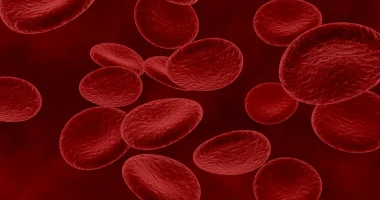A brain tumor is a lump or growth of unusual cells in the spinal cord or brain. These tumors can sometimes interfere with how the brain works. Some are more dangerous than others.
Brain tumors can be classified into two types. They are malignant (cancerous) and benign (non-cancerous). Malignant tumors are generally more dangerous than benign ones.
Benign brain tumors do not contain cancer cells. They grow slowly and usually stay in one place without spreading. These types of tumors are more frequent than malignant ones. In fact, the American Brain Tumor Association states that about two-thirds of new brain tumors are non-cancerous.
Malignant brain tumors, on the other hand, include cancer cells. They don’t have clear edges, can grow quickly, and can spread to other areas of the brain, making them more life-threatening.
According to the American Cancer Society, the statistics for brain tumors are combined with those for spinal cord tumors. They estimated that in 2019, healthcare professionals would determine up to 23,820 new cases of spinal cord tumors and malignant primary brain.
Symptoms
The symptoms of brain tumors can vary greatly depending on the kind and location of the tumor. These symptoms might develop gradually and slowly worsen over time, or they could appear suddenly, such as with a seizure.
Frequent symptoms of tumors involve continuous headaches, vision problems, vomiting, nausea, and general drowsiness. Many people also experience seizures, problems with short-term memory, coordination difficulties, speech problems, and personality changes. However, it’s important to note that some individuals may have a brain tumor without showing any symptoms at all.
As stated by the American Cancer Society, around half of individuals with a tumor in the brain experience continuous headaches. Additionally, up to half of all individuals with a tumor will have a seizure at some phase during their illness.
Diagnosis of Brain Tumors
To identify a brain tumor, a healthcare provider typically begins with a neurological exam, which tests the nervous system. During this exam, they will check for problems in different functions that might indicate a tumor in the brain. These functions include limb and hand strength, hearing, reflexes, vision, skin sensitivity, coordination, balance, memory, and mental stability.
After the neurological exam, the doctor may schedule additional tests to get a clearer picture. These tests might include:
- CT scan: This creates an accurate X-ray of the brain.
- MRI Scan: This utilizes strong radio waves and magnetic fields to give a complete brain image.
- EEG (Electroencephalogram): In this test, a healthcare provider attaches electrodes to the individual’s head to examine for any uncommon brain activity.
If the doctor doubts a brain tumor based on these tests, they will typically send a biopsy. During a biopsy, a healthcare professional removes a small piece of the tumor. This sample is then sent to a laboratory for testing to determine whether the tumor is malignant.
Risk Factors
As stated by the American Cancer Society, most tumors don’t have known risk factors. The only established environmental risk element is contact with the radiation, typically from radiation therapy used to treat other cancers, like leukemia.
Family history plays a minimal role in brain tumors. While most people with brain tumors do not have a history of the family of the condition, certain familial cancer diseases can increase the risk. These disorders include neurofibromatosis types 1 and 2, von Hippel–Lindau disease, tuberous sclerosis, and Li–Fraumeni syndrome.
Additionally, individuals with weakened immune systems, like those with late-stage HIV, may also have a higher chance of developing brain tumors.
Treatment of Brain Tumors
When deciding how to treat brain tumors, doctors consider several factors and work closely with the individual to inform them of their treatment alternatives. This collaboration helps in choosing the most suitable treatment. Elements considered involve the person’s age, general health, medical history, the tumor’s location, size, and type, the chance of the tumor affecting, and the person’s tolerance for particular treatments.
Surgery
Surgery is often the first method of medication for tumors. The doctor aims to eliminate as much as possible without damaging the healthy tissue around it. In some cases, the entire tumor cannot be removed. When this happens, the surgeon may remove as much as possible and follow up with chemotherapy radiation to target the remaining tumor cells. Surgery might not be effective for tumors that are deep within the brain or have spread widely. However, it can provide a tissue sample for biopsy or help relieve symptoms like stress on the brain.
Radiation Therapy
Radiation therapy aims to rule out the brain tumor or stop its growth by directing rays of intense energy at the tumor. This causes the tumor to diminish, and the immune system then works to eliminate the destroyed cells. However, radiation can affect both cancerous and healthy cells. Advanced kinds of radiation therapy, like three-dimensional conformal radiation therapy, aim for multiple weaker beams from different angles to minimize damage to healthy tissue while concentrating the damage on the tumor.
Radiosurgery
Radiosurgery, or stereotactic radiosurgery, is a specialized type of radiation therapy. It is not a surgical process. SRS delivers a precise dose of radiation to the tumor, reducing the risk of damage to healthy tissue. This method uses an X-ray beam focused specifically on the part of the brain with the tumor.
Other Medications
Steroids may be prescribed to alleviate symptoms and discomfort associated with brain tumors, though they do not treat the tumor directly. Antiseizure medications can assist in decreasing the frequency of seizures. If the tumor affects the pituitary gland, hormone supplements might be necessary.
Chemotherapy
Chemotherapy involves using specific medicines to medicate brain tumors, particularly malignant ones. These drugs stop the tumor from growing by preventing the tumor cells from duplicating and can also induce the tumor cells to die. For some brain tumors, chemotherapy drugs can be administered into the cerebrospinal fluid. Chemotherapy is often used alongside surgery or radiation therapy but can be an effective standalone treatment for certain tumors like lymphoma and medulloblastoma.
Outlook
In the U.S., the five-year survival rate for individuals with brain tumors varies based on factors like age and the type of tumor. This survival rate measures how likely it is for someone with a spinal cord or brain tumor to live for five years after diagnosis compared to someone without cancer.
For instance, people aged 20 to 44 with a type of tumor called ependymoma have a 92% likelihood of surviving for five years after being diagnosed. This rate drops to 86% for those aged 55 to 64. On the other hand, for the same age ranges, the survival rate for glioblastoma is much lower, at 5% and 19%, respectively.
Overall, the National Cancer Institute reported that between 2009 and 2015, 32.9% of individuals with nervous system or brain cancers survived for five years or longer, considering all types of tumors.
However, only a doctor can provide a clear prognosis based on the specific details of an individual’s case.
After being diagnosed with a brain tumor, it can be an extremely stressful time. The American Brain Tumor Association offers support and resources to help people cope. They can be reached toll-free at (800) 886-ABTA for care and assistance.
Summary
Brain tumors can be benign or malignant, with symptoms varying based on the tumor’s type and location. Diagnosis involves neurological exams and imaging tests like CT and MRI scans, often followed by a biopsy. Treatment options include surgery, radiation therapy, radiosurgery, and chemotherapy, each tailored to individual factors such as age and health. Survival rates depend on tumor type and patient age, with specific survival statistics varying widely. The American Brain Tumor Association provides support and resources for those affected. A doctor’s guidance is crucial for understanding individual prognosis and treatment options.








